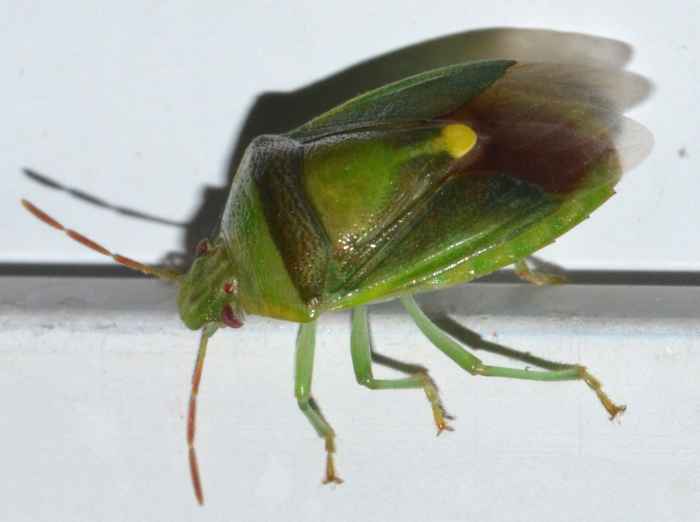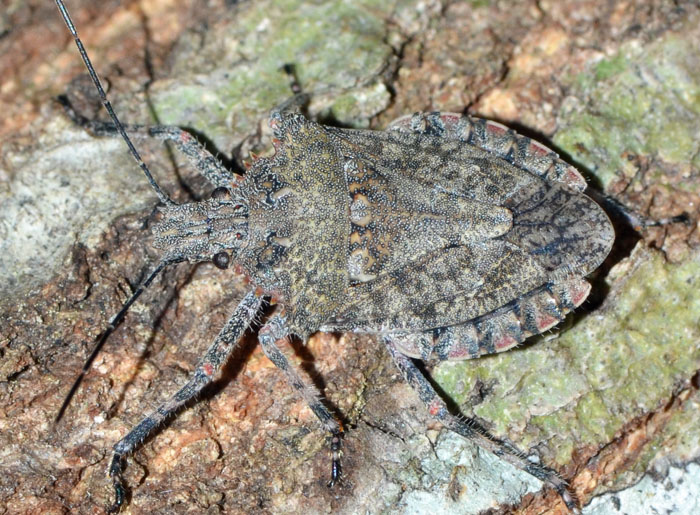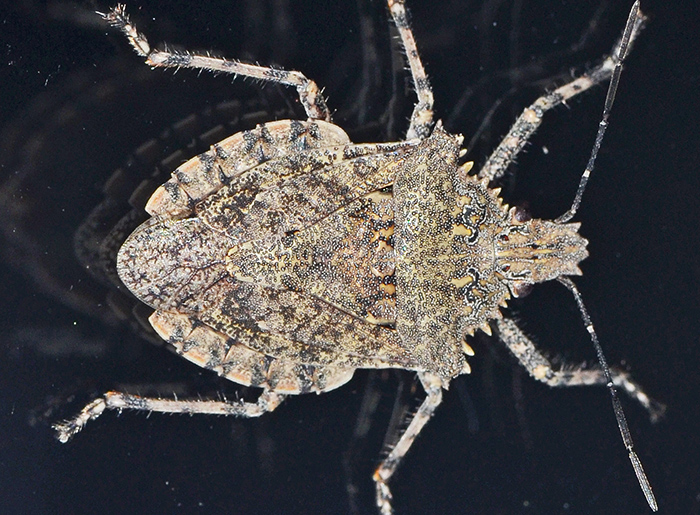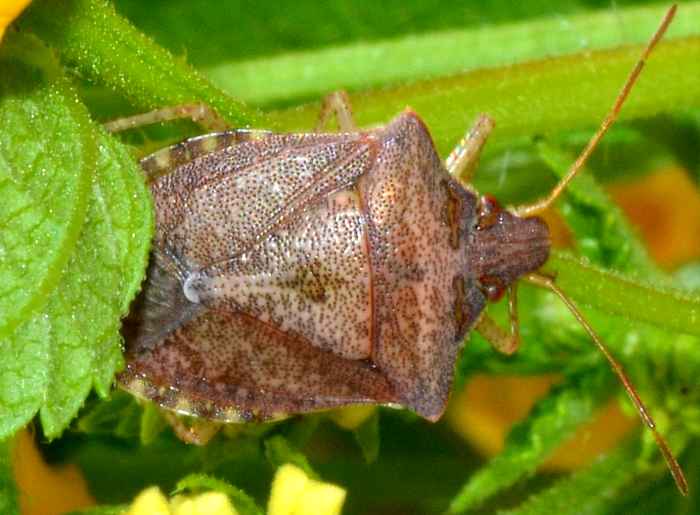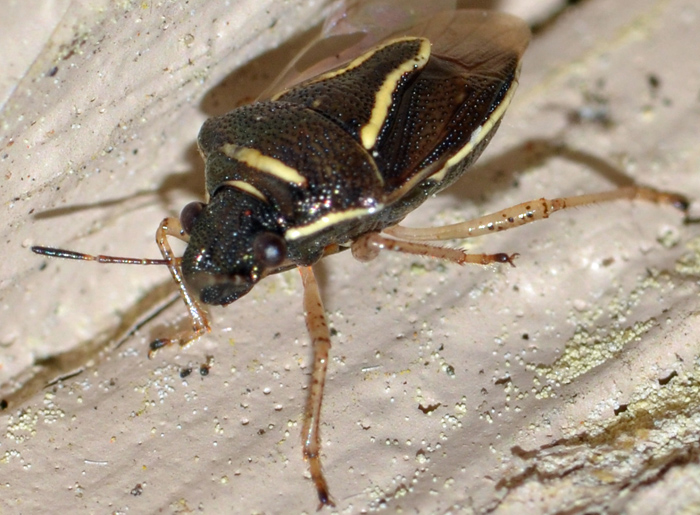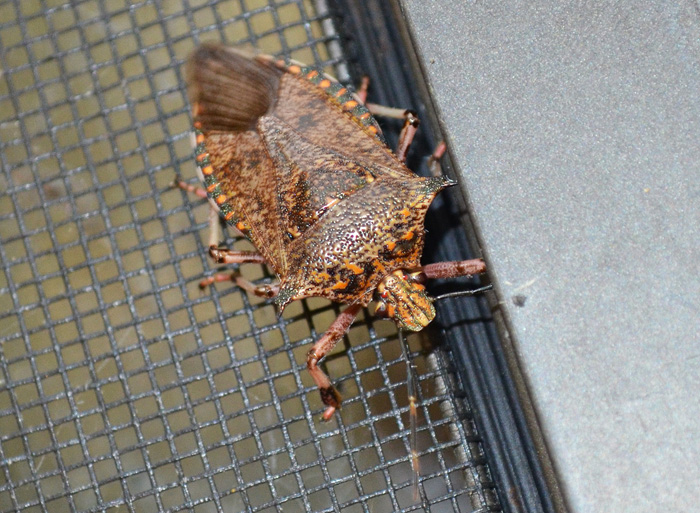 Alcaeorrhynchus grandis (Giant Strong-nosed Stink Bug). | Hey, who doesn't like a giant stink bug on their window? This predatory stink bug preys on other insects, especially lepidopterous larvae and can be found in several row crops and close to streams and marshes. Females are slightly larger than their male partners and can reach a length of a full inch. Instars III-V are blueish black with striking red keels on their pronotum. bug guide (this photo): http://bugguide.net/node/view/859877 UF: http://entnemdept.ufl.edu/creatures/beneficial/a_grandis.htm | ||
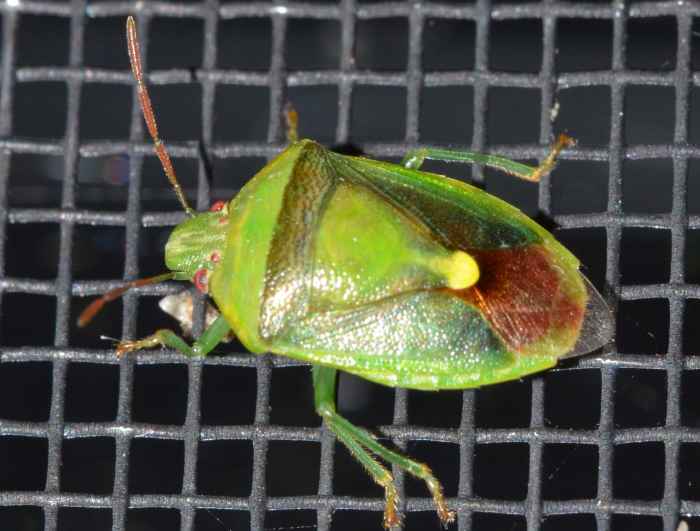 Banasa dimiata (?) (Stink Bug (nonspec.)). | Stink bugs (also known as shield bugs) can produce unpleasant smells from their thoracic glands. These odors provide some self-defense. This specimen is probably Banasa dimiata and came to the light of a window. B. dimiata can be found in the entire US. The genus has 11 species in our area.
bug guide (these photos): http://bugguide.net/node/view/578732 Tom Murray: http://www.pbase.com/tmurray74/stink_bugs_pentatomidae | ||
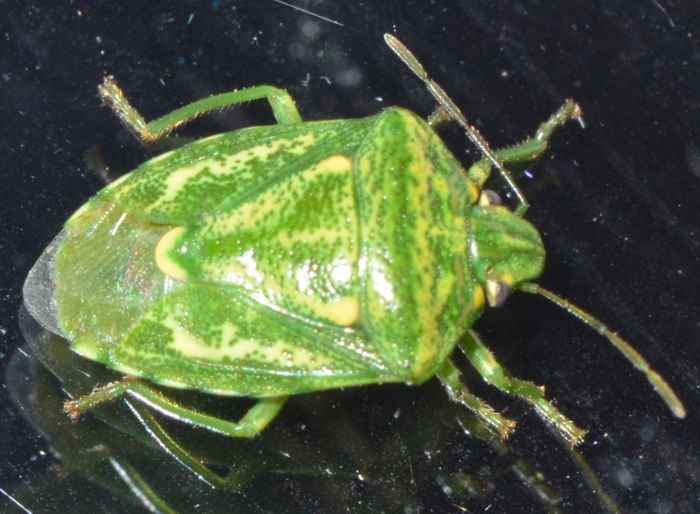 Banasa euchlora (Juniper Stink Bug). | Also known as Jade Stinkbug. This is Banasa euchlora. Adults are attracted to light and are often found on juniper plants. bug guide (this photo): http://bugguide.net/node/view/584855 | ||
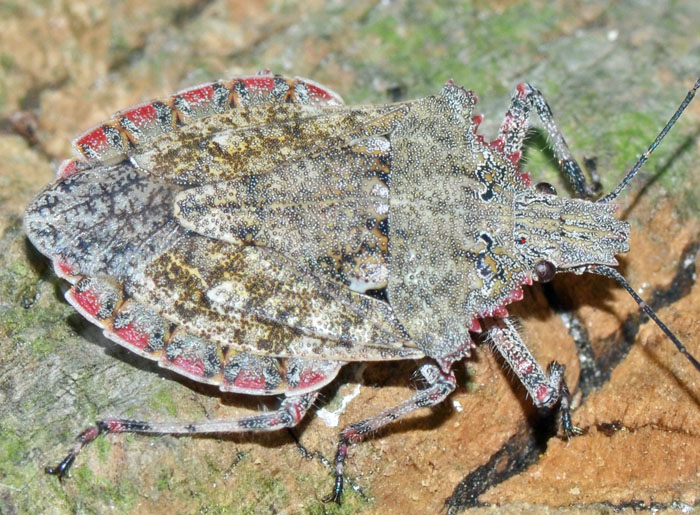 Brochymena arborea. | This Rough Stink Bug (also known as Tree Stink Bug) has an amazing color pattern which provides great camouflage for the bug on bark and similar surfaces. The little photos show different specimens. They too have been IDed on bugguide.net by an expert.
bug guide (this photo): http://bugguide.net/node/view/951583 | ||
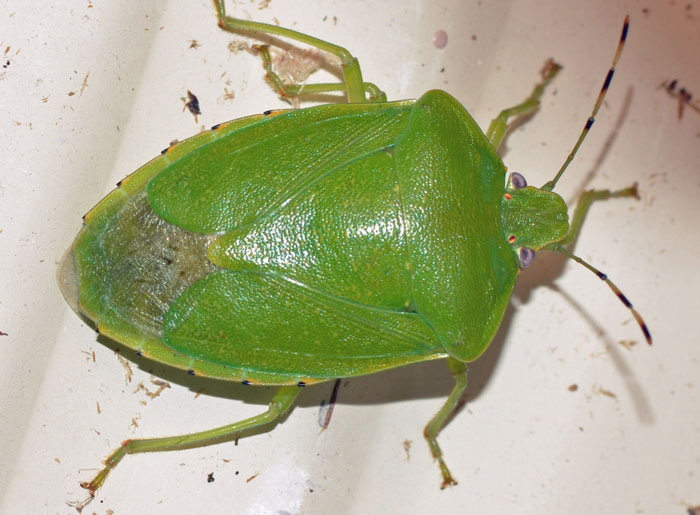 Chinavia hilaris (Green Stink Bug). | I learned a new word! This species is extremely "polyphagous" meaning it feeds on a wide variety of foods. The Green Stink Bug is the perhaps the most common member of this family in North America but the record on bugguide.net suggests that it might be less common in Florida. bug guide: http://bugguide.net/node/view/9066 | ||
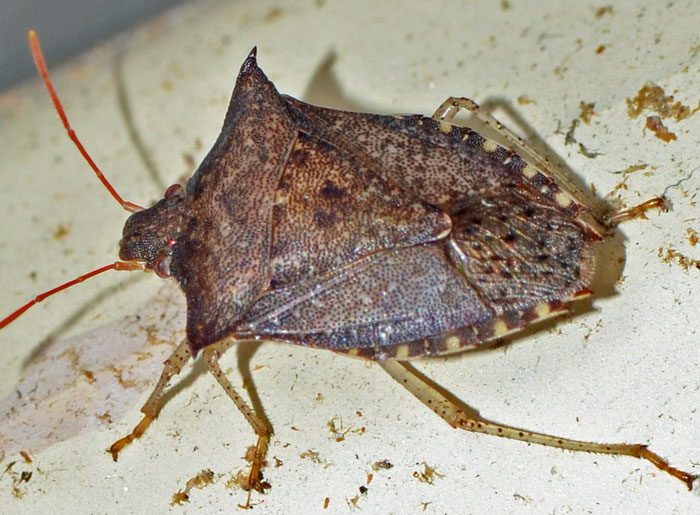 Euschistus sp.. | These stink bugs belong to the genus Euschistus which has 20 species in North America and is widespread. They feed on plant juices and may be destructive to fruits. Identifications of the species level requires ventral views. The small photo was taken on 05/27/12 at 5 pm.
bug guide: http://bugguide.net/node/view/7207 | ||
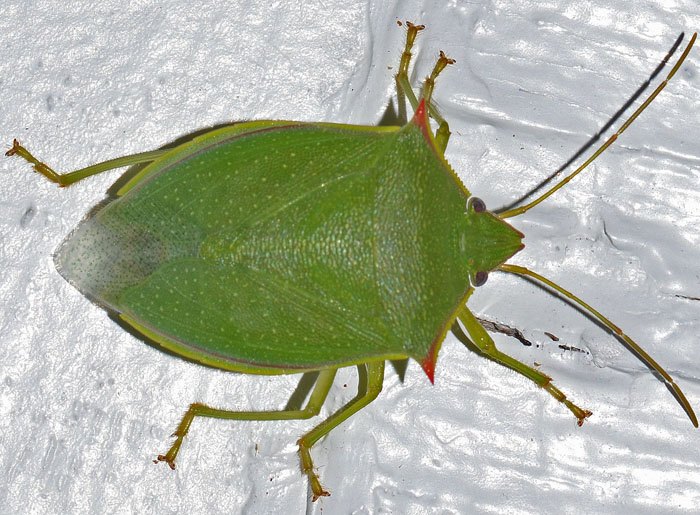 Loxa sp.. | The genus Loxa has two species in North America. They differ from other green stinkbugs by the spined sides of the pronotum and the serrated side margin in front of them. If it is true that L. flavicollis has a pale head, then this specimen would be L. viridis.
bug guide (this photo): http://bugguide.net/node/view/982462 | ||
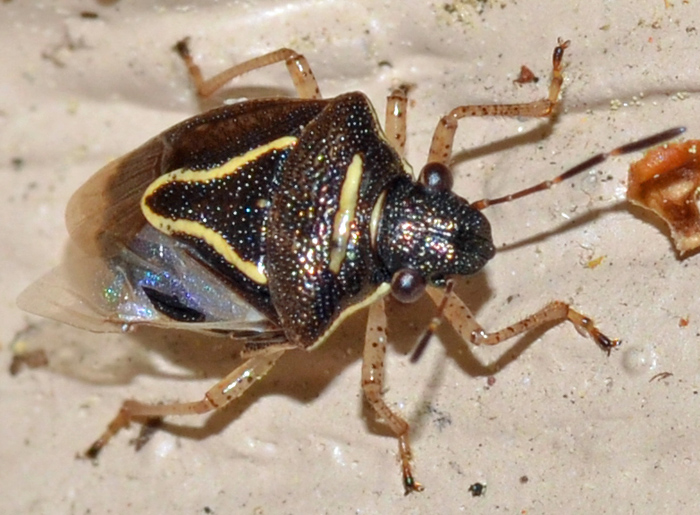 Mormidea lugens. | A small but rather pretty stink bug. This species can be recognized by its shiny black/brown color and the yellow/white boundary around the scutellum. I found this one on the exterior wall of our house. Its preferred habitat seems to be grasses.
bug guide (this photo): http://bugguide.net/node/view/938045 | ||
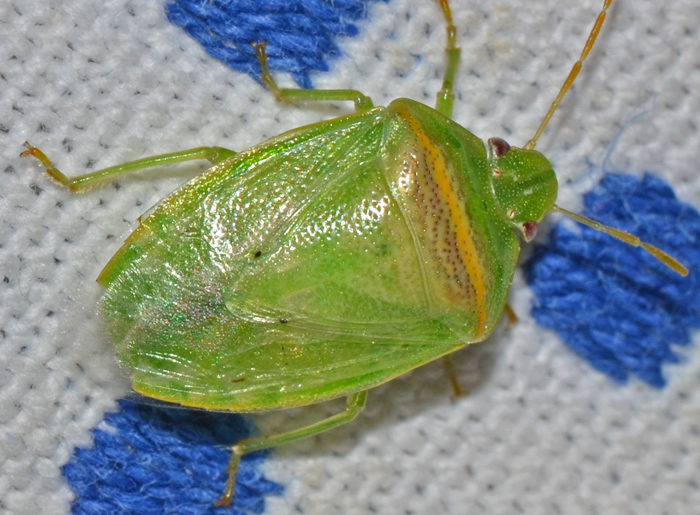 Piezodorus guildinii (Red-banded Stink Bug). | My wife discovered this one on my T-shirt (after an unsuccessful trip to our porch lights) and skillfully transferred it to a kitchen towel. The Red-banded Stink Bug is native to South and Central America, and the southern US. It is apparently quite common in Florida and sometimes considered a pest as it feeds on seeds of legumes such as soybeans and alfalfa. Five to eight generations can occur in a single growing season. bug guide (this photo): http://bugguide.net/node/view/1221897 | ||
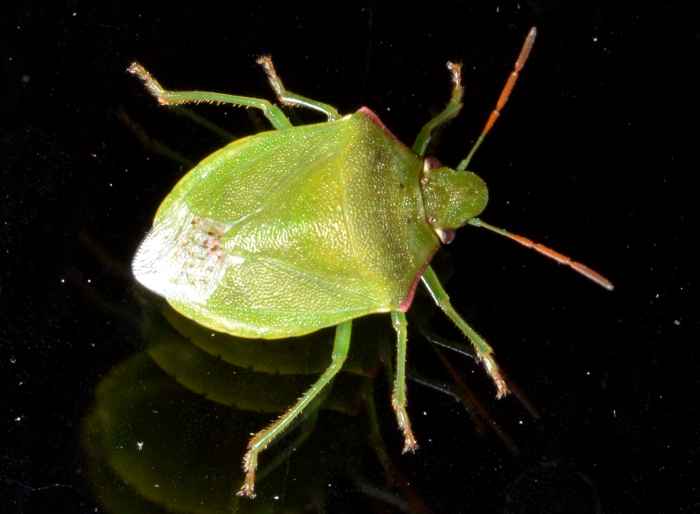 Thyanta sp.. | This stink bug is Thyanta sp. It reminded me of Banasa but I have been told that Banasa are "more elongated, smooth bugs w/o prominent humeri" (see link). bug guide (this photo): http://bugguide.net/node/view/660741 |

